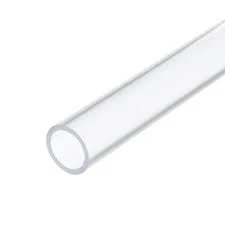Aug . 30, 2024 08:00 Back to list
High-Density Polyethylene (HDPE) Boards - Durable, Versatile, and Eco-Friendly Solutions
Understanding HDPE Board Properties, Uses, and Benefits
High-Density Polyethylene (HDPE) board has rapidly gained popularity across various industries due to its remarkable properties and versatility. As a thermoplastic made from petroleum, HDPE is lightweight yet durable, making it an ideal material for numerous applications. This article will explore the properties, uses, and benefits of HDPE boards, shedding light on why they are increasingly favored in both residential and commercial sectors.
Properties of HDPE Board
One of the most significant advantages of HDPE boards is their exceptional strength-to-weight ratio. This strength allows HDPE boards to resist impact and deformation, making them suitable for demanding environments. Furthermore, HDPE is chemically resistant, which means that it can withstand exposure to many substances without degrading or breaking down. This resistance extends to factors like moisture, UV rays, and various chemicals, making it ideal for outdoor applications.
HDPE is also known for its low friction and surface energy, which can reduce wear over time, especially in applications involving moving or sliding components. Additionally, HDPE boards are non-toxic and environmentally friendly, as they can be recycled, contributing to sustainability efforts.
Uses of HDPE Board
The versatility of HDPE boards is evident in their wide range of applications. They are commonly used in industries such as construction, agriculture, and packaging. In construction, HDPE boards are utilized for making partitions, roofing sheets, and wall panels due to their durability and ease of installation. In agricultural settings, they can serve as lining materials in ponds or as protective barriers in livestock facilities.
hdpe board

Moreover, HDPE boards are extensively employed in manufacturing products like crates, bins, and containers, largely due to their lightweight nature and resistance to corrosion. They are also found in furniture, playground equipment, and even marine applications, such as floating docks and boat fenders.
Benefits of HDPE Board
The benefits of using HDPE boards are multifaceted. First and foremost, their durability translates into lower maintenance costs and longer lifespans compared to traditional materials. This cost-effectiveness is a significant factor for businesses and homeowners alike. Additionally, the lightweight nature of HDPE boards facilitates easy handling and transportation, reducing labor costs and time.
Another key benefit is their resistance to moisture and chemicals, making them an excellent choice for areas prone to spills or exposure to harsh substances. This quality also makes HDPE boards suitable for sanitary applications, such as food storage and processing.
Furthermore, the ability to customize HDPE boards in various colors and sizes allows for creative designs without compromising on functionality. Their aesthetic appeal can enhance the overall look of any project, making them an attractive option for designers and architects.
Conclusion
In summary, HDPE boards stand out for their exceptional properties and extensive applicability across various industries. Their durability, resistance to environmental factors, and low maintenance requirements make them an attractive and economical choice for countless applications. As more industries turn to sustainable materials, HDPE boards are likely to continue their upward trajectory in popularity, proving to be a practical solution for both present and future needs.
-
Durable HDPE Sheet | Versatile & Impact-Resistant Plastic
NewsAug.13,2025
-
Premium PVC Soft Sheets: Clear, Flexible & Durable
NewsAug.12,2025
-
Premium PVC Round Rods: Durable, Chemical Resistant, Easy to Machine
NewsAug.11,2025
-
PP U-channel: Chemical-Resistant, Lightweight & Durable
NewsAug.10,2025
-
Transparent PVC Pipe: Clear Flexible Tubing for Fluids
NewsAug.09,2025
-
Durable PP Rigid Sheet: Versatile & High-Quality Plastic Panels
NewsAug.08,2025

